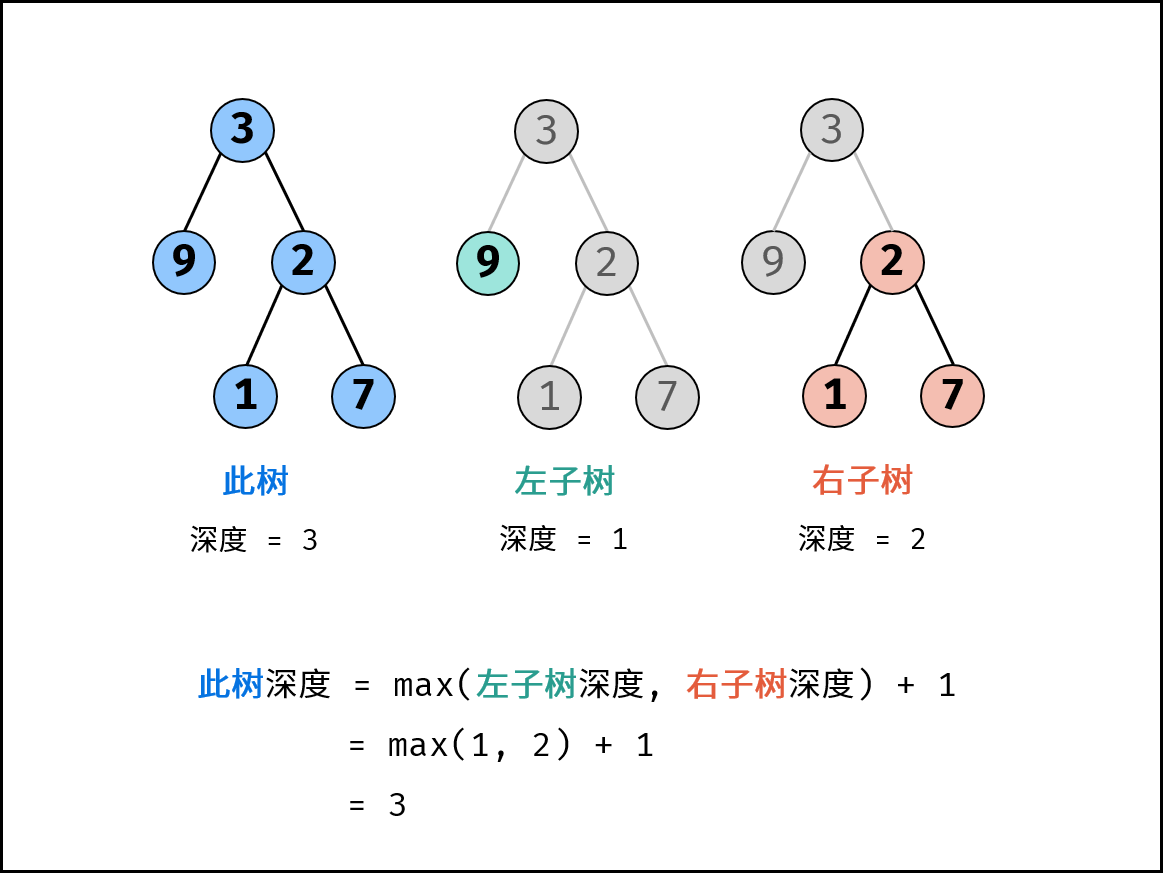Leetcode 104.二叉树的最大深度
给定一个二叉树,找出其最大深度。
二叉树的深度为根节点到最远叶子节点的最长路径上的节点数。
说明: 叶子节点是指没有子节点的节点。
示例: 给定二叉树 [3,9,20,null,null,15,7],

返回它的最大深度 3 。
解题思路:
树的后序遍历 / 深度优先搜索往往利用 递归 或 栈 实现,本文使用递归实现。
关键点: 此树的深度和其左(右)子树的深度之间的关系。显然,此树的深度 等于 左子树的深度 与 右子树的深度中的 最大值 +1+1+1 。

终止条件: 当 root 为空,说明已越过叶节点,因此返回 深度 000 。
递推工作: 本质上是对树做后序遍历。
计算节点 root 的 左子树的深度 ,即调用 maxDepth(root.left)。
计算节点 root 的 右子树的深度 ,即调用 maxDepth(root.right)。
返回值: 返回 此树的深度 ,即 max(maxDepth(root.left), maxDepth(root.right)) + 1
代码实现:
DFS
class Solution {
public int maxDepth(TreeNode root) {
if(root == null){
return 0;
}
int leftDepth = maxDepth(root.left);
int rightDepth = maxDepth(root.right);
return Math.max(leftDepth,rightDepth)+1;
}
}
BFS:
class Solution {
int res;
public int maxDepth(TreeNode root) {
if(root == null){
return 0;
}
Queue<TreeNode> queue = new LinkedList();
queue.add(root);
while(!queue.isEmpty()){
int size = queue.size();
res++;
while(size-->0){
TreeNode currNode = queue.poll();
if(currNode.left != null){
queue.add(currNode.left);
}
if(currNode.right != null){
queue.add(currNode.right);
}
}
}
return res;
}
}




评论区